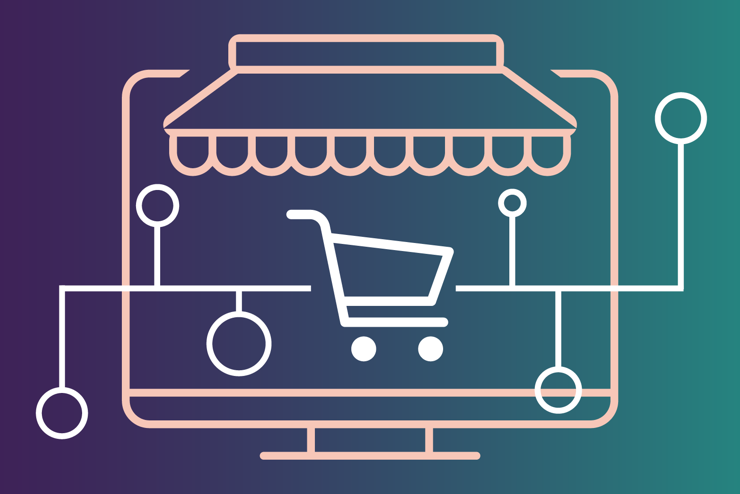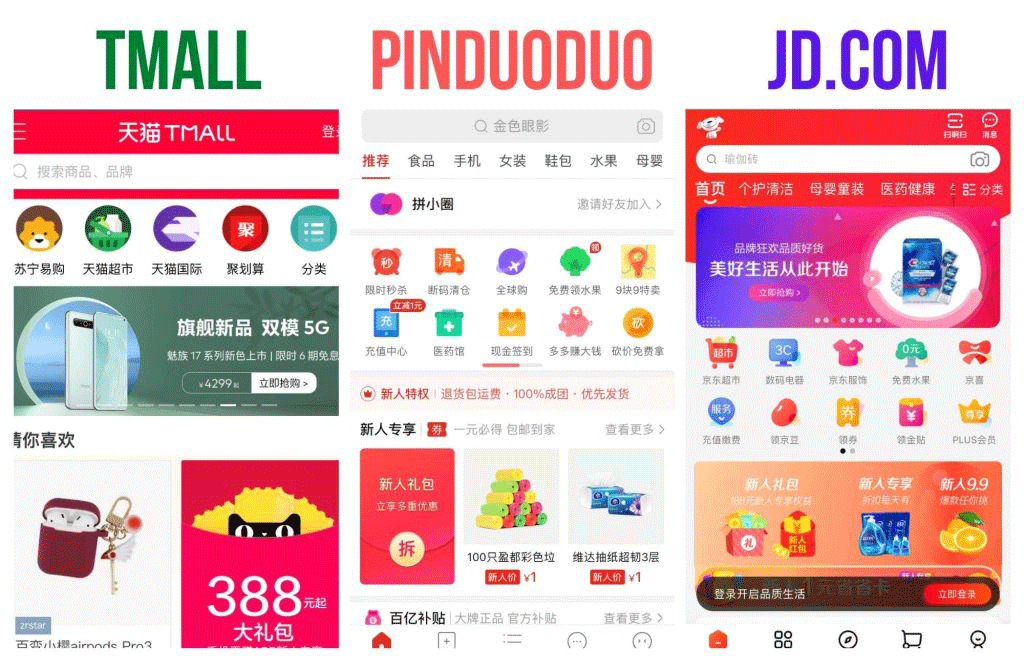Great Facts On Deciding On Sellvia Amazon Seller Dropshipping Services
Wiki Article
What Are The Features Of Customer Support And Service Characteristics Of An Amazon Seller? Shopify Or Wordpress Services For Dropshipping In Us Markets?
Dropshipping in the U.S. market requires a comprehensive evaluation of the Customer Service and support features on Amazon Seller, Shopify (WooCommerce), and WordPress. This is crucial as customer satisfaction depends on responsive support, effective communication, and secure issues resolution. Here's a summary of the support tools and tools for customer service offered on each platform.
1. Amazon Seller
Amazon Customer Support Policies
The strictest policies on customer communication: Amazon has strict guidelines on how and when you are able to communicate with customers. It can be difficult to meet the deadline of 24 hours for answering customer inquiries.
FBA sellers can save time with Amazon's FBA Program, which manages returns, refunds, and customer queries. For Merchant Fulfilled Network (MFN) it is necessary to handle returns, refunds, as well as queries directly, which calls for solid customer service procedures.
Help for Sellers
Seller Support: Amazon provides seller assistance through its SellerCentral platform. You can access FAQs, resources, live chat, or email support to help solve issues related to account management and order issues.
Amazon is liable to its sellers for certain metrics like the Order Defect Ratio (ODR) or response times. Insufficient customer service can lead to account suspensions. A reliable customer service is, therefore, essential.
Amazon Sellers: Evaluation Steps
Check Response Time: Go over Amazon's deadlines for customer response times and make sure that you have enough capacity or other tools to meet these requirements (such automated response systems).
Return Handling: Make sure you are using MFN and if your fulfillment partner or supplier offers assistance with returns. If you use FBA, Amazon will handle returns, but it's essential to keep track of any issues so that you can ensure customer satisfaction.
Customer Service Tool: Ensure you're aware of Seller Central's tools for handling disputes, refunds, and general questions. Consider third-party tools if you need additional support for meeting Amazon's strict requirements for response.
2. Shopify
Integrated Customer Service Apps:
Shopify is integrated with Gorgias Zendesk Re and Re, all of which offer customer service apps.
The dashboards let you centrally manage customer inquiries across a variety of channels (emails chats, email and social media).
Automated communications: Shopify's apps provide automated responses, chatbots or FAQs that assist customers in finding quick answers to questions.
Shopify's customized messaging lets you to tailor emails for confirmations of abandoned carts and email emails. It is also possible to personalize follow-up emails. This will allow you to maintain high customer satisfaction and strengthen relationships with your customers.
Order tracking and Notifications
Real-time Notifications: Shopify can send real-time messages to customers with regards to the status of their orders, updates on shipping as well as delivery tracking. This reduces the number of customer queries about orders status.
Customer Order Status: Shopify's Order Status page allows customers to check the status of their purchases without needing to call customer support.
Assessment Steps for Shopify:
Consider Available Apps. Gorgias provides omnichannel service and is directly integrated into Shopify.
Shopify provides a wide range of options that can be customized, such as chatbots and automated responses.
After-Sale Service: Verify the options available for providing customer service post-sale such as return labels or refunds processed by third-party software. Shopify's integrations are able to simplify the return process and improve customer satisfaction.
3. WordPress (WooCommerce),
Customer Service Plugins
WooCommerce offers a wide range of customer service plugins including Zendesk, Help Scout and Live chat. These plugins integrate with your site. These tools include live chat, knowledge bases, and tickets for customer service.
Automated Chatbots for quick responses You can make use of AI based chatbot plug-ins (e.g. Tidio, ChatBot), which automatizes customer interactions and increases response time.
Email Notifications WooCommerce supports customized email notifications that contain orders confirmations, shipping information and delivery. Customers can thus be updated about their orders.
Order Tracking and Returns Management:
Order Tracking: TrackShip provides real-time order tracking information that customers are able to get on your website. It helps reduce inquiries regarding orders.
Returns and Refunds WooCommerce supports customizable refund and returns policies. WooCommerce's WooCommerceRMA plugin can automate returns. This feature allows you to process refunds and returns faster.
WooCommerce evaluation steps:
Examine plugins for chatbots as well as live chat and ticketing. Help Scout and LiveChat are highly rated for WooCommerce and provide integrated customer support capabilities.
Automated Communication and Tracking Make order tracking and status updates easy to access to customers. This will help reduce the number of inquiries regarding order status. TrackShip is a plugin that can automate notification notifications.
WooCommerce gives you plenty of flexibility in creating refunds and return policies. Make use of plugins that manage returns, making the process easier for your customers. See the expert Sellvia for website advice including sell online website, drop shipping, amazon commerce, opening e commerce business, ecommerce business for sale, online commerce store, trending ecommerce, dropshipping business, best items to sell online, dropshipping store and more.

How Can I Best Determine The Scalability And Customization
In the case of dropshippers, assessing Scalability is essential. Amazon Seller, Shopify or WordPress (WooCommerce), all provide different levels of customization, growth and scalability. Here's a breakdown of the best ways to evaluate these elements for dropshipping businesses that target the U.S. market.
1. Amazon Seller
Scalability:
Marketplace Exposure Infrastructure: Amazon is able to scale because of its large U.S. customers, fulfillment infrastructure (Fulfillment through Amazon or FBA) as well as an established reputation. Dropshipping means less work to create traffic, but it also means more competition, and less branding control.
Fulfillment-by-Amazon (FBA) FBA enables sellers to expand quickly, leveraging Amazon's logistics network, which includes storage, shipping and packaging. FBA, however, is not typical of pure dropshipping. This means that sellers might have to choose between Amazon's Fulfillment or managing third party dropship partnership.
Amazon's listing restrictions have guidelines for dropshipping, which restrict certain activities like direct shipping from a different retailer. Amazon also restricts the way listings are displayed, which can impact the brand and differentiated products.
Customization:
Amazon offers a limited amount of store customization. The look and feel is strictly controlled by Amazon, which makes it difficult to customize brand and customer experiences. Sellers are unable to alter the layout or color, and branding options are minimal beyond logos and brand names.
Branding Tools for Registered Brands Amazon's Brand Registry offers tools like Enhanced Brand Content (EBC) and A+ Content for sellers who have trademarks registered with the company. These features provide custom content sections, images as well as comprehensive descriptions for listings of products. They can help build brand recognition.
Amazon has a limited ability to control pricing. Discounts, coupons, as well as Lightning Deals are also available. Customers often compare listings according to price, which can cause pressure on pricing.
Amazon Sellers: Steps to Assess their Performance
Evaluation of Fulfillment: Determine if Amazon FBA, or Merchant Fulfilled Network is a better fit for your dropshipping strategies. If you decide to use MFN, make sure your dropshipping partners are able to meet Amazon's requirements.
Take a look at the Brand Registry: If you own a registered trademark and want to use the Brand Registry to unlock Enhanced Brand Content for better customization.
Analyze Pricing Strategies: Understand Amazon's changing pricing environment to determine if you can maintain your competitiveness while preserving the profit margins.
2. Shopify
Scalability:
Plans and Upgrade Options: Shopify offers a tiered pricing system that allows customers to start with a simple plan, and then move up to more sophisticated plans that allow for higher transaction volumes, additional features, and more customizable options. Shopify Plus offers high-volume sellers advanced tools.
Dropshipping apps as well as Fulfillment Networks Shopify integrates with dropshipping platforms such as Oberlo Spocket and Modalyst quickly, allowing sellers to include new products and automate the fulfillment of orders even as their business expands. Shopify works with shipping services such as Shopify Fulfillment Network, ShipBob and others for an scalable logistics support.
Third-Party Integrations: Shopify's app marketplace lets you easily integrate additional features as your business grows. The variety of apps that are available for marketing analytics customer support inventory management as well as other purposes is an excellent way for dropshippers to grow.
Customization:
Shopify themes allow you to modify your store. This allows sellers to create a brand-named shop. Dropshippers are able modify the themes in terms of layout, color, and style.
Coding and App Integrations: Shopify's Liquid programming language permits advanced customizations when you have the skills to develop or have access to a developer. Shopify's API is open and allows you to connect to third party services, or to integrate custom applications.
Shopify's Customer Experience customization features include product recommendations, loyalty programs and personalized email flows that allow dropshippers to create a personalized shopping experience for U.S. consumers.
Examining Shopify:
Examine Your Growth Expectations. Determine if your current Shopify plan includes the upgrades and features you require. Shopify offers a variety of features that can assist you in scaling, such as multi-store capabilities on Shopify Plus.
Consider Customization Options: Try various themes and think about customization needs for your brand. You should consider whether you'll require an expert programmer to create custom-coded functions or integrations.
Dropshipping App Integrations Find dropshipping applications that are that work with Shopify and your preferred supplier, making sure that they are scalable and smooth to manage inventory and orders.
3. WordPress (WooCommerce),
Scalability:
WooCommerce can be hosted by many different web hosting providers. Managed WordPress hosts (e.g. WP Engine, Kinsta) can handle high traffic sites. However, the costs will increase as your site grows.
Control over Infrastructure: WooCommerce offers complete control over server configurations. This allows custom optimizations based on traffic and order volumes. This level of control is beneficial to advanced dropshippers, who are expecting high volumes of sales and want to be flexible in their technology stack.
Plugins for Fulfillment and Automation: WooCommerce provides plugins such as AliDropship and Oberlo. These plugins will streamline your order processing and inventory updates, as in addition to other aspects of operation.
Customization:
WooCommerce features thousands of themes and design options. A lot of them can be custom-made. CSS and HTML expertise can help you create a brand experience that is unique.
The plugins available from WooCommerce's ecosystem offer virtually unlimited customization options. Customers can improve their customer experience by adding plugins to offer SEO as well as abandoned-cart recoveries loyalty programs, and other functions. This is especially useful in U.S. dropshipping where marketing targeted and conversion optimization are key.
WooCommerce provides code-level customization. This means that those who have programming expertise (or those who have access to developers) can build custom plugins of their own, modify backend functionality and design a custom experience. The platform can be customized to your liking including product pages, to checkout flow.
WooCommerce Evaluation Steps
Examine the Scalability of Hosting: Select a provider of hosting that is able to handle more volume of traffic as your dropshipping company expands. Ascertain that the hosting package has scalable features such as bandwidth or storage.
Look at Themes and Plugins Customization. Examine the WooCommerce's theme and plugins to determine whether they allow customization specifically in the context of U.S.-based marketing strategies. Which plugins will simplify your dropshipping?
If you are in need of ongoing customization, consider code-level modifications. Have a look at the best Sellvia for more info including online business for sell, sell via, opening e commerce business, best thing to sell online, website business for sale, build an online shop, good items to sell online, good items to sell online, starting an online store, start and online business and more.
